|
When at the end of the 1950s the government discussed a possible salvaging of the royal ship Vasa, the man-of-war which had sunk in Stockholm Harbour in 1628, a member of parliament asked: "Who would be willing to pay to look at an old wreck?" The wreck was salvaged, and today we know that the Vasa Museum in Stockholm, with its seven hundred thousand paying visitors per year, has in different ways been a successful affair for the people of Stockholm. The wreck of the royal ship Vasa, together with the unfortunately less well-known member of the Swedish royal ship class Kronan, which sank off Öland in 1676, illustrates how well-preserved objects can still be after more than three hundred years in the Baltic. The absence of wood-eating organisms, due to the low salinity, and the lack of tides create a favourable environment for the preservation of wrecks. The countries around the Baltic Sea have a rich, and by comparison with the rest of the world, well-preserved marine heritage. Kronan. Photo Bengt Grisell In historical times, the only efficient method of transport was by sea, but it also brought numerous founderings. In wartime naval battles were fought; in more recent times torpedoes and exploding mines have had many tragic consequences. Fleets of thirty ships fully loaded with goods, troops and war materials were not unusual during Sweden's Great Power period. Many of these ships went down en route to the Swedish provinces and theatres of war, and lie to this day undisturbed at the bottom of the Baltic. This rich legacy to posteriority should be treated with respect, insight and knowledge. Respect for the people who lost their lives, insight into the events which took place, and knowledge of how best to care for these relics for the future. As long as we lack knowledge, we cannot devise fully satisfactory protection. We are all responsible for, as far as possible, preserving this rich heritage for future generations. The question is whether the protection which exists today is adequate and what threats there are in reality. The number of wrecks in the Baltic Sea is not known, but at a conservative estimate around eighty thousand vessels have been lost at sea over a period of six hundred years. Along the Swedish coast there are some ten thousand recorded losses of ships, of which the date and location of fifteen hundred are known. The true number of wrecks is considerably higher, perhaps twenty thousand. Of these, more than ninety-nine per cent are historical wrecks, i.e. wrecks which have occurred between 1500-1998. Even if the majority of these wrecks are in such a condition that preservation must be considered pointless and scientifically uninteresting, there remain in Sweden alone no less than a thousand wrecks which ought to receive expert assessment before their future is decided. More than eight hundred of these fall within the field of responsibility of the Central Board of National Antiquities, as they sank more than a hundred years ago. Most Swedish wrecks are protected by the Cultural Monuments Act (1989), and the few others have had the protection of ownership. The question is whether this protection is adequate. Most wrecks lie unprotected, and it is in practice impossible to supervise them, any more than it would be possible to guard an open and unlit museum at night. Sweden today has 130 000 registered amateur divers and aimless plundering and souvenir-hunting is proceeding in silence. Our waters reflect our society in general in that it is impossible to protect them from undesirable and illegal activity. The former Soviet Baltic states have been spared this development, because private diving was not possible during the Soviet era. The development of leisure diving was very much limited by the fact that large areas of water were closed and closely supervised. Today these areas are wide open and have no legal protection, which means that diving enthusiasts and fortune-seekers from all over Europe are making for these countries' virgin waters. Vasa. Photo the Vasa Museum Several projects, inspired by financial rather than historical interest, have featured in the media in recent times. If the Vasa had been run as a purely commercial salvage project, the salvage operation would in all probability have resulted in the recovery of four bronze cannons, of which two would have gone to the state in a 50/50 share-out. If there is a wish to prevent such a development, the need for common legislation in the Baltic Sea has to be seen as almost acute. When the Vasa was salvaged in 1961, she became visible evidence of the well-preserved historical storehouse which lies in the Baltic Sea. When amateur diving came to Sweden in the early fifties the wrecks which had previously only existed in the archives became enticing treasure chests. Easily accessible and apparently ownerless, they lay on the bottom waiting for anybody who felt like it to exploit and bring up. At this time the discoverer was legally the owner of the wreck, unless the true owner claimed it. Anders Franzén, the discoverer of the Vasa, was in other words its owner, that is to say, if the Navy waived its ownership. However both parties surrendered their rights to the Central Board of National Antiquities. Anders Franzén. Photo the Vasa Museum The then custodian of antiquities, Bengt Thordeman, wrote to the government in 1965, pointing out the need for protection for shipwrecks older than a hundred years. A law similar to the 1942 Archaeological Finds Act was regarded as necessary in order to preserve our cultural heritage under water as well. Such a law was passed and came into effect on 1 April 1967. Briefly it states that wrecks of vessels which sank more than a hundred years ago and which have no owner belong to the state. Denmark already had a similar law, although with a difference in the time covered, 150 years, which was later amended to 100 years in line with the other Scandinavian countries. Finland and Ĺland adopted an interesting and somewhat different variation in the wording of their act: vessels more than 100 years old which have no owner belong to the state, i.e. here it is not the year of sinking but the year of construction of the vessel which is important. A new Swedish Cultural Monuments Act was passed on 1 January 1989. Remarkably enough, this treats shipwrecks, when at least a hundred years have elapsed, as ancient monuments, in contrast to the normal legal view that shipwrecks are movable property. This is despite the fact that the draft legislation advisory committee said in 1967: "... that even if the rules on ancient monuments should in essence be applied it has to be borne in mind in formulating the protective regulations that these discoveries are movable, shifting objects". Considering shipwrecks as real property means that they can be expropriated by compulsory acquisition. The new act states: "shipwrecks shall be regarded as ancient monuments provided that they are permanently abandoned and objects belonging to the wreck and lacking an owner when discovered shall be considered archaeological finds". But many sunken vessels and their contents have owners and cannot therefore be regarded as abandoned. It is also stated that if there is an owner he/she must apply for consent from the county administration before moving, modifying or removing her/his property. The Central Board of National Antiquities states that if the wreck is of major cultural and historical value and if the owner does not have the resources for a necessary marine archeological survey, documentation and conservation, this constitutes special grounds for not allowing the owner to salvage her/his vessel. In a civil law case it is unlikely that this legal intrusion would be found enforceable, still less gain the support of a European court. Another consequence of this legal somersault is that Swedish shipwrecks, when they are to be regarded as ancient monuments and are outside the borders of Sweden, pass into the ownership of other states, and that foreign wrecks in Swedish territorial waters become Swedish property. In view of the expansion of territorial limits in recent decades, this may have unforeseen consequences. When the Vasa had been salvaged, personnel were needed to catalogue and to dig out the objects from the layers of mud and silt. The Vasa was entrusted to the Central Board of National Antiquities and thus became a job for archaeologists. The National Maritime Museum was staffed at that time with naval officers, maritime historians and ex-sea captains. With the arrival of the Vasa, there was a ninefold increase in staff. Ethnologists, archaeologists and art experts with little or no knowledge of maritime history or engineering were engaged. Since then projects have been carried out with no consideration of the period of the wrecks and with no insistence on a knowledge of technology, history or the history of technology. The training offered by a degree course in archaeology at Stockholm University contains no relevant preparation for the work of research, planning, documentation, and uncovering with regard to the estimated eight hundred wrecks of marine historical interest. But according to a memorandum from the Central Board of National Antiquities (25 June 1989), three terms of university study in archaeology are necessary in order to satisfy reasonable scientific requirements, i.e. for examining and assessing all categories of wreck up to the year 1899. This means that there has been a move away from the subject of maritime history which started with the recovery of the Vasa. The difference between maritime history and archaeology is quite apparent when the working methods of the archaeologist are studied. If we consider a mound of earth, where a prehistoric grave is expected to be found, from an archaeologist's point of view, we are faced with the problem that we do not know with a hundred per cent certainty its contents and stratigraphy, unlike those of historical finds. This confronts us with the painstaking and time-consuming task of exposing layer after layer with brush and trowel, so as not to destroy or miss any informative artefacts. When this work has been done we can roughly determine the dates of the grave from the form of burial or the artefacts. But we can seldom obtain a complete explanation of who, why, or when it took place. This in turn leaves room for widely differing ideas and theories, not all of which reach a desirable scientific level. This archaeological method also came to be applied under water. The marine archaeologist speaks of excavating a wreck, when what is actually involved is exposing a wreck. In purely practical terms this may perhaps involve releasing the wreck concerned from what is not essential to its examination, e.g. sludge, clay and sand. Whereas in terrestrial archaeology important information may be contained in the stratigraphy, there is no stratigraphy under water if the depth is not great. Water is not static but is constantly stirring up the sea bed. In addition the vessel has no connection with the actual place of discovery, since it may be assumed that it has usually been wrecked in a place which was foreign to the ship. Marine objects or wrecks are treated as archaeological finds, despite the fact that they already have a known context and despite the fact that they bear no resemblance to artefacts excavated from an ancient Scandinavian grave. Knowledge of a historical wreck can often be found in the archives and the objects in the wreck are often superficially well documented. If the find consists, for example, of a cannon, there is no doubt as to what it was used for, unlike the prehistoric stone axe found in a grave. To obtain more knowledge of the cannon one cannot make use of archaeological interpretations, due to the inescapable fact that the information one is looking for is in the archives. An object from a wreck, for example a cannon, has in most cases a very eventful and well-documented history. A find recovered from under water is transferred from one element to another and has to be lifted and then cared for using extremely refined methods in order to avoid destroying valuable information. Then the object has to be examined and documented using all the scientific knowledge available, such as DNA technique, metallurgy, chemistry etc. With the aid of this knowledge the finds have to be put in their correct historical context. Today nothing of this is happening and research is carrying on without historical interpretation of the objects and without using current scientific findings. When in 1980 the Royal Institute of Technology in Stockholm, using the most advanced underwater technology of the period, had located the royal ship Kronan, which sank off Öland in 1676, this came into the sphere of responsibility of the Central Board of National Antiquities. The Board was aghast at the discovery of yet another Franzén wreck and would gladly have covered it over with sand. Having been a purely scientific project, it now became a humanist one. A diving archaeologist was installed as project manager for Kronan, one of the biggest finds in maritime history. Today, eighteen years later, the project has still not been completed and it has been continuing without any new underwater technology or methods. The project seems today to be a job opportunity with no visible conclusion and no great cross-disciplinary result. In the meantime invaluable historical objects have been destroyed and a number of marine finds have been damaged as a result of ignorance. Seventeenth-century bronze cannons which have been salvaged have been cleaned with chisels and grinding discs; parts of skeletons, invaluable with the availability of modern DNA techniques for genetic research, have been stuffed into onion bags and destroyed; the contents of bottles have been allowed to evaporate before they have been examined by experts; inscriptions have disappeared from wooden objects without being documented, etc. The lack of knowledge in one or more special fields or pure self-indulgence on the part of uninformed people mean that our marine heritage is being destroyed, just as happened in the case of the unique sixteenth-century vessel discovered when draining Kalmar Castle Moat in 1933. It was burned in the sixties to make room for a cafe and to heat Kalmar Castle. Lack of interest in our marine heritage on the part of the responsible authorities has led to these irrevocable destructive interventions. Neither skill nor anything else has been required of the people entrusted with responsibility. No need for expert assistance has been considered to exist and people with training irrelevant for the purpose have been given unsupervised charge of priceless historic objects. A complex historical community such as Kronan was almost certainly the last opportunity to study in detail an undisturbed seventeenth-century society from every angle. In these circumstances one understands the tragic persecution of Anders Franzén (Expressen, 9 December 1991, Knut Ahnlund) after archaeologists had staked out the Vasa. With his vision, his technical knowledge and his interest in maritime history he undoubtedly constituted a threat to the archaeological and museological establishment. Vasa offered job opportunities and unemployed archaeologists quickly found posts. Anders Franzén was deprived of his life work and history repeated itself when the royal ship Kronan was discovered. Undoubtedly there is a clear distinction between the different epochs of
archaeology and maritime history. Historians speak of the technical revolution during the Middle
Ages and we cannot ignore the fact that there were also innovations in shipbuilding. In broad
outline it may be claimed that the age of marine technology in the Nordic countries extends from
the Middle Ages until today. The time before can then be regarded as prehistoric or archaeological
time.
The wreck of A.E. Nordenskiöld's Vega, which in 1878-1880 became the first vessel to sail the North-East Passage, lies in some four hundred metres of water off the west coast of Greenland. Advanced technical knowledge is required for locating, documenting and salvaging it. Its history is well documented in publications and archives. The Vega is only one example of many where the participation of an archaeologist may be regarded as irrelevant. A shipwreck which occurred in historical times leaves very little room for interpreting who, where and why. This knowledge, as stated previously, is usually to be found in the written sources and compared with a find without access to this knowledge the scope for free interpretation or theories is limited. Vessels from the sixteenth and seventeenth centuries are products of advanced technology and contain complex technical equipment, in a historical perspective the high technology of their period, which requires scientific study for its interpretation. If an objective scientific standard is to be maintained in marine research, the relevance of the present free interpretations should be discussed. Surveys of wrecks are very costly and technically demanding and ought to be carried out in an economically and scientifically acceptable manner. Marine archaeological surveys are often required in connection with commercial development, and financed by property developers or local authorities prior to various private or social building projects on new land. It is in the interest of both the entrepreneur and the community to ensure that these surveys are organized cost-effectively using modern methods and relevant knowledge and without private financial interest. It would be wrong for this monopoly enjoyed by the Central Board of National Antiquities to be utilized for financing its own activities. Marine historical surveys could perhaps in many cases be run more cost-effectively. Underwater work with specialist surface vessels as a base for operations is expensive. Thorough preliminary study of various relevant subjects and, not least, of modern technology are required in order to achieve cost-effectiveness. The developments which have taken place in diving and underwater technology in the last forty years have not been heeded and no substantial innovative progress has been made in facilitating the work. Money and personnel have been wasted on projects when knowledge has in many cases been available in the archives. The bill has in the end been met by the community. Failure to tackle this problem can only be interpreted as a total lack of interest on the part of the authorities. What, then, is required in order to work on marine finds in a scientifically acceptable manner? If a shipwreck at sea is involved, it is necessary to have access to inspection and/or diving vessels with advanced technical equipment for locating and documenting the wreck. Additional knowledge of diving and relevant technology is necessary in order to examine, and possibly uncover and salvage the wreck. Before a wreck can justifiably be disturbed, a detailed study of the history, construction and technical circumstances of the vessel is necessary, i.e. knowledge of the scientific and technical conditions which led to the creation of this technical product and its extensive equipment. It cannot be considered reasonable for responsibility for examination and documentation of, for example, a vessel such as the Titanic, with a dead weight of 46 000 gross tonnes at a depth of four thousand metres, to rest on the shoulders of archaeologists. If the current practice of the Central Board of National Antiquities is continued, archaeologists will in the year 2094 examine and explain why the Estonia sank, as the wreck will then be covered by the Cultural Monuments Act. This is despite the fact that Swedish and foreign experts on and outside the Swedish Board of Accident Investigation are still not agreed, four years after the accident, on the cause. If we take a comparable example on land, the unreasonable nature of the whole situation will become apparent. When a Boeing 747 has crashed for unknown reasons, an accident group is immediately set up, consisting of experts on this particular aircraft. The purpose is to investigate the cause of the accident. Only the experts who have studied this type of aircraft know which of the millions of twisted and burnt pieces belong to the aircraft and how they function and how they are to be fitted into their correct context. Pieces or substances which do not belong may be parts of a bomb or a clue to a still undiscovered cause of the accident. Anybody who understands this simple example must admit that it would be uneconomic and unprofessional to send a group of archaeologists to the scene of this accident. The questions would surely be more than the answers. The university archaeology syllabus contains no elementary study of shipwrecks or the technology involved in investigating them. The development of underwater technology is becoming increasingly advanced and on many occasions an archaeologist is, quite naturally, unfamiliar with it. The lack of technical awareness became obvious in the seventies when fortune-seekers and amateur archaeologists invaded the wreck-studded Swedish islands of Öland and Gotland to look for valuable archaeological finds with metal detectors. Although the metal detector was an established archaeological tool in other parts of the world, and reached the centenary of its invention in 1981, it appeared to be relatively unknown in Sweden. This lack of technical insight created a climate for the theft of archaeological finds. As a result of this we acquired a law prohibiting the use of this technical aid. If nothing is done about this lack of technical insight, we can in future expect similar devastation in the Baltic Sea. When society has not mastered and cannot control the technical innovations which are inevitably exploited by less responsible groups, there is a demand for new laws. But new laws do not help our marine heritage. Many sites of finds are scattered all over great areas of sea which are impossible to supervise. If we wish to preserve our marine heritage for posterity, responsible authorities must take an interest in and learn about technical developments. An interesting question for Sweden is which authority or institution is to decide and select which objects from twenty-thousand wrecks are to be protected and preserved for coming generations. It has previously been considered that the depth alone has been sufficient protection. Today the new technology available means that depth no longer prevents exploitation of wrecks. It has become considerably more feasible for amateur divers to work at depths of over fifty metres. Unless the coming generation is to inherit only unscientific literary essays on our maritime past, the technical aspect must be given more attention.
Of the prehistoric wrecks, i.e. those from periods before written sources, it is very probable that only one per cent are pure archaeology. On land, if not in water, it is taken almost as a matter of course that renovation and documentation of aircraft, vessels, cars, castles, manor houses, churches, furniture and every other conceivable object from historic times is carried out by experts with knowledge of the field and the period concerned. When will the same obvious requirements be imposed in the Baltic? The royal ship Vasa has today assumed the role of a cultural symbol, although the reality is different. The Vasa is a manifestation of seventeenth-century technology and, as such, an excellent scientific exhibit. The locating of the wreck, the diving and the recovery of the ship, and the marine technology, have been forgotten and are being replaced by plays, music and dancing. If in the future we are going to stake our exports and livelihood on anything more than cultural manifestations, it should not always be a matter of course to convert objects of technohistorical interest into cultural symbols. At a memorial service for Anders Franzén at the Vasa Museum after his death in 1993, the former museum director began his speech by saying that Anders was not a marine archaeologist. He may not have realized how correct he was in this assertion. For nobody can surely imagine that in the 1950s an archaeologist would have taken the initiative to search the archives, and look for and bring up a royal ship in Stockholm Harbour. Anders succeeded in accomplishing this because he had a great interest in technological and maritime history and not least because he was a great visionary. On the centenary of the Royal Institute of Technology in Stockholm in 1927 the Swedish Government decided to introduce a degree of doctor of engineering and a number of speakers urged that the motto "for peaceful achievement" be adopted. The president, Anders Lindstedt, gave a memorable address. We quote:
Just over seventy years later, we cannot avoid asking the responsible authorities: why do we not have a Ministry of Technology and Science, when we have a Ministry of Culture? Stockholm, 1998 Bengt Grisell, Senior Research Engineer Lorelei Randall, M.A. in Archaeology Published in Nordic Underwater Archaeology, May '99. |
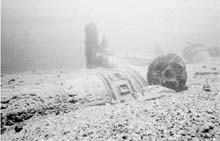
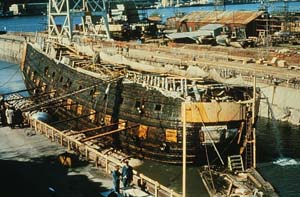
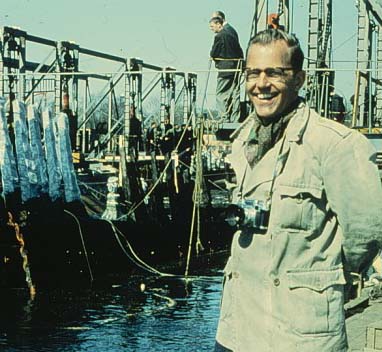
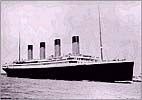
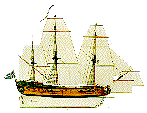
 Back to Nordic Underwater Archaeology
Back to Nordic Underwater Archaeology